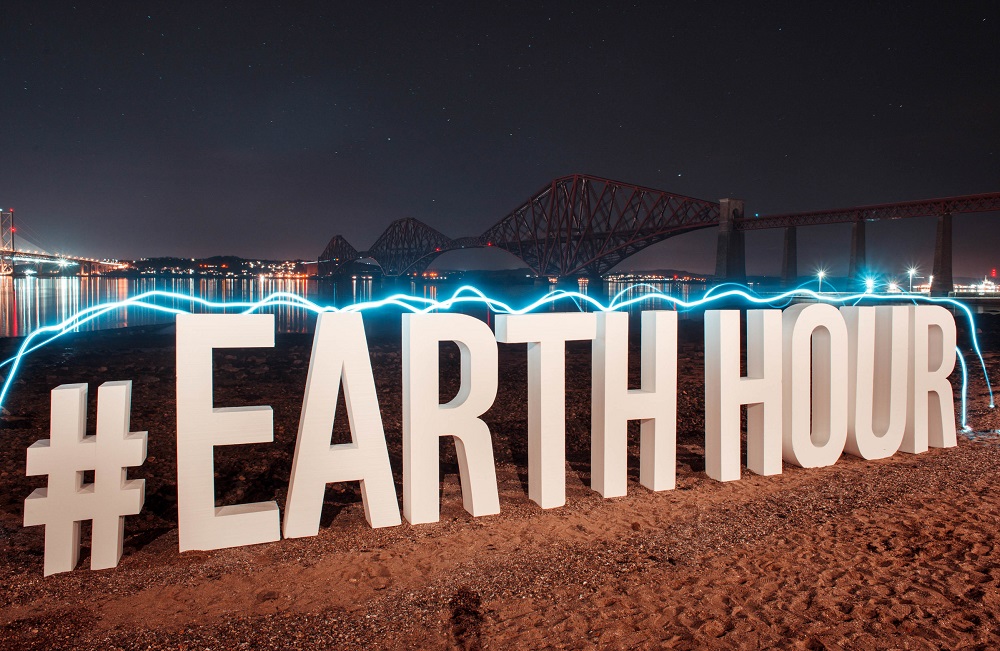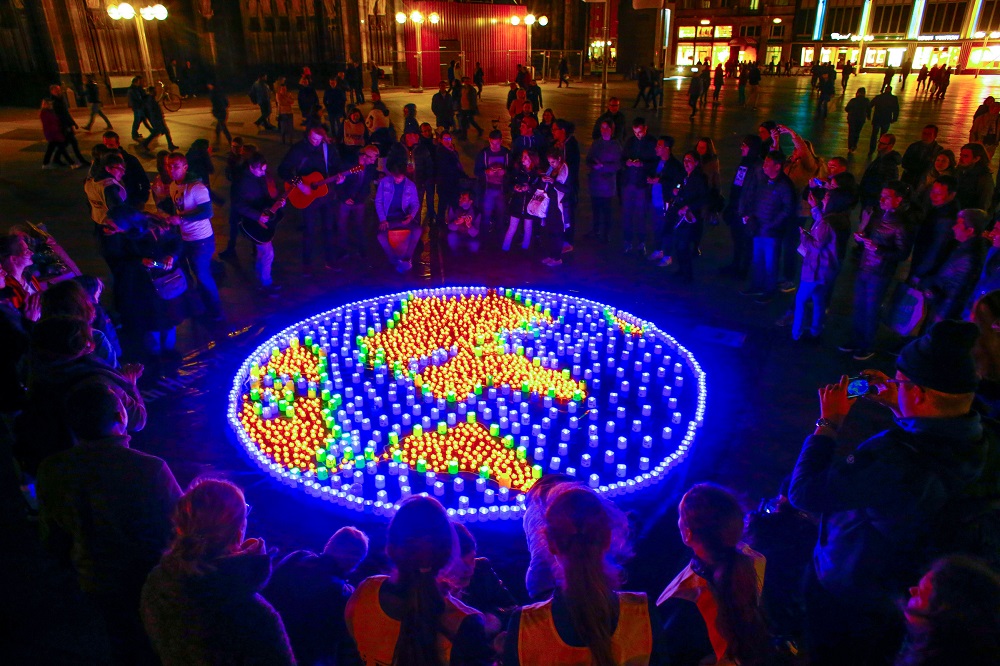THE MERITS OF EARTH HOUR
More than a switch-off event, Earth Hour 2018 focuses on raising awareness about how accelerating climate change and staggering biodiversity loss threaten the planet. We want to channel the momentum and energy of the Earth Hour movement to connect people to Earth.
Earth Hour is the opposite of living in darkness, it is the moment that shines for the hope and potential we have to create a better future for the people and the planet. Yes, global landmarks switching off are often what catches people’s attention but at the same time, Earth Hour has helped sustain the global momentum for action on climate – from climate-friendly policy and legislation at national and business levels to actions by individuals and communities to switch to renewables, sustainable living choices and more. This is what Earth Hour is about, the positive impact we can create as individuals and a collective to build a green, healthy and sustainable future for the planet.

© Maverick Photo Agency / Callum Bennetts / WWF-UK
From a symbolic event in Sydney in 2007, Earth Hour has grown to be the largest grassroots and open source movement that uses technology and social media to strengthen connections and amplify its message to reach more people around the globe. WWF strives to make Earth Hour activities low-carbon and minimize our footprint not just during Earth Hour but for the rest of the year. People are also encouraged to hold their own Earth Hour activities that are low-carbon and respectful of the environment and their communities.
Mass switch-off/on activities during Earth Hour are safe and do not cause any harmful disruption to the electricity grid. For the past 10 years, WWF-Philippines holds Earth Hour events in partnership with the Department of Energy and other government agencies to ensure public order and safety.
By doing the 60 minute lights out challenge together, we can measure the amount of electricity that we save. It goes back to the basic practice of energy efficiency - the energy that you save is the energy that you don't use. Energy saving measures - from switching off non-essential lights to choosing more energy efficient appliances - are valuable climate actions that we can easily do to protect our planet.

© Picture Alliance / Thilo Schmülgen / WWF-Germany
Earth Hour generates big media and online buzz every year, that's true - but all this is for a good cause to generate public support and reach more people, businesses and governments, to spark conversations. For more than 10 years, Earth Hour has mobilized millions around the world to work together and focus on climate and biodiversity actions as we tackle the planet’s biggest environmental challenges.
Filipinos have embraced Earth Hour over the years. The 2017 switch-off event generated massive support with more than 713 cities and municipalities, and 193 landmarks in the Philippines participating. The campaign also reached millions of individuals who amplified our reach on social media to generate public awareness on the pressing need for more sustainable actions to fight climate change.
Beyond the Hour initiatives also supported the Earth Hour Village project in Masbate where adaptive technologies are introduced to improve community resilience to the impacts of climate change, thus helping communities to sustainably access food, water, and energy.
Worldwide impacts include:
- Successfully urging for new legislation for protection of forests twice the size of France in Russia in 2013;
- Mobilizing public support for the creation of a 3.5 million hectare marine-protected area in Argentina;
- The creation of a 2,700-hectare Earth Hour forest in Uganda; and
- Planting of 17 million trees in Kazakhstan.
But these are just some of the highlights of what has become the world’s largest grassroots movement for the environment. There are so many more Earth Hour stories out there we are still discovering, and of course much more to do.
Inspired by Earth Hour, WWF-Philippines continues to promote sustainability among the public through its ongoing projects working together with partners (government, local government units, businesses, academe, and civil society organizations) to help build climate-resilient communities that enjoy a low-carbon future.
